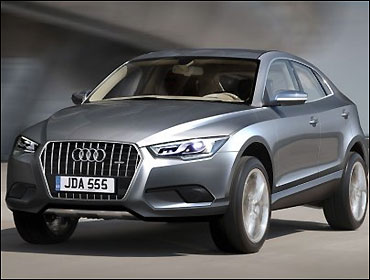
The guys from Autocar had a chance to join a secret test ride with a development model of the next-generation Porsche 911 and here is their report:
An all new Porsche 911 will be revealed later this year – and Autocar joined the development team in South Africa to sample the car.
The new 911, codename 991, is only the third all new design in the car’s incomparable 48 year history. The first of the three most critical departures between it and its forebears is that this is the first 911 to be built chiefly from aluminium.
The second difference is that the wheelbase has been extended by a substantial (but currently secret) amount. Two-thirds of the extra space between the wheels is located behind the driver, although it remains a fundamentally two-seat car. Project manager August Achleitner insists the car’s character and agility have not been compromised.
But if fiddling with a 911’s wheelbase is courting controversy, changing the way it steers might be seen by purists as punching it in the face. The third reason this 911 is like no other before is that hydraulic power steering has been dropped for an electro-mechanical system.
Achleitner insists: ‘If you drove this car you would never know it did not have hydraulic steering. Believe me, I know how important this is.”
The 991 is lighter than the car it replaces by dozens of kilos, despite bigger, heavier wheels, tires and brakes and more robust crash structures. It’s also very slightly lower.
But some things have not changed so much. While there is not a single interchangeable part in the suspension, the architectural concept remains the same. You’ll find struts at the front and a multi-link arrangement at the back. Relative spring rates have been slightly increased while the damping has been backed off a little, in pursuit of better small bump isolation. The front track has been widened by a similar amount to that which helped transform the dynamic behaviour of the current 997 GT3 RS.
Only the powertrain remains familiar, and even here there have been big changes. While the ‘S’ continues to displace 3.8-litres, the standard car’s capacity has been reduced to 3.4-litres. In fact its bore and stroke are identical to those of a Boxster S, though different cams and a new exhaust provide more power – 350bhp at the moment, though homologation has yet to be completed. The power of the 3.8 rises to 400bhp and the rev limit of both engines increases by 200rpm to 7800rpm.
The PDK double clutch auto has been sharpened up again but it is the manual that might be introduced that breaks new ground. In effect it is a manually controlled single clutch version of PDK which means, for the first time in any manual production car I can think of, seven forward speeds. In fact the first six ratios are identical to the auto, though a slightly shorter, more sporting top gear is fitted.
The ramifications go far beyond the extra cog. This means the old gearbox is no more, so Porsche’s Motorsport colleagues working on the next generation of GT3s down in Weissach have nothing to strap to the old race-based flat six that’s powered all their cars since 1999. So this noble motor has been retired, presumably to be replaced by the somewhat simpler, cheaper, more modern and unrelated direct injection engine used by all other 911s. Quite what will be done to it for the new GT3 remains to be seen.
I jump into the passenger seat of the 3.8-liter ‘S’ and exhort Herr Achleitner to drive me back down the mountain as fast as he possibly can. A quick glance around the interior reveals Panamera style and switches, providing a substantial step up in both quality and efficacy from the 997; then he’s off.
More power and less weight means the old Carrera S’s 0-62mph time of 4.7sec is going to be toast. Porsche hasn’t done the numbers yet, but my money is on 4.5sec for the S and 4.8sec for the 3.4-liter car.
What I notice is the disconnect between the savagery with which the car attacks each corner and the almost complete tranquillity in the cockpit. What struck me most was how easy it appeared to drive the car on the limit, and how unflappable was its composure.
It seems to move the game on even from the lofty heights achieved by the 997, but if you’re looking for me to deliver a definitive verdict from the passenger seat, you’re asking the wrong bloke. It was a masterly performance, enough to make me desperate to find out more about what is, clearly, an extraordinary car and, I have little doubt, a great Porsche.
But is it still a 911? If it is, my sense is that it will be a rather different one – even more capable, usable, spacious, comfortable and quiet. But whether this has been achieved at the expense of some of that magical 997 ability to make you feel hardwired into the road surface, it is simply impossible to say without a steering wheel in your hands.
Click for Full Size






Click title for the source


















